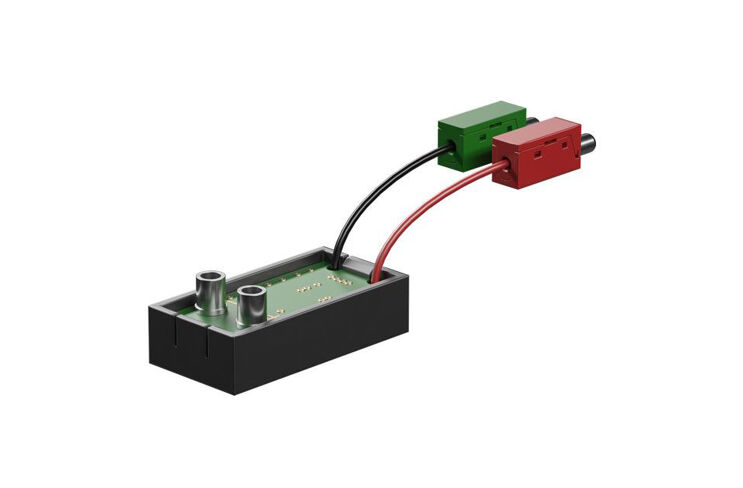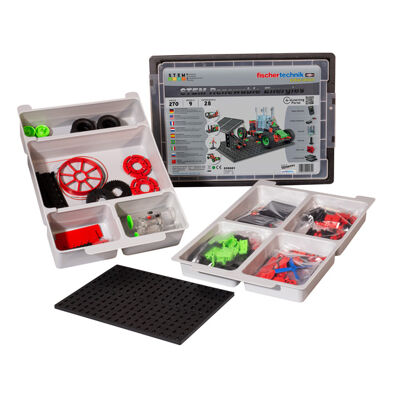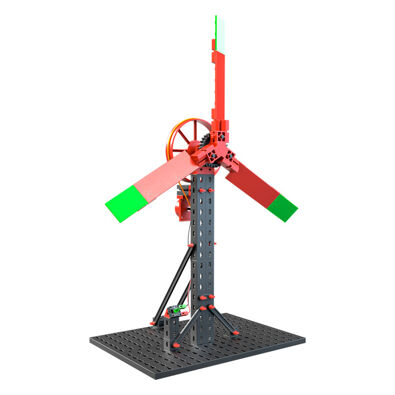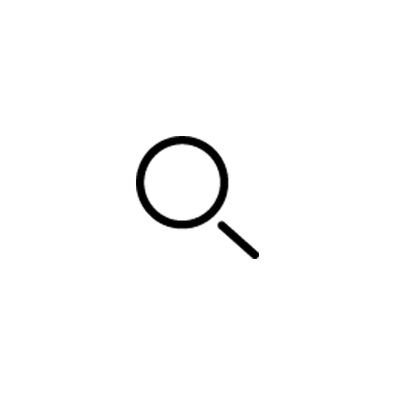- Home
- Schools
- Learning material
- STEM Renewable Energies
How can you generate environmentally friendly electricity? How does a fuel cell work and how can it be used to produce hydrogen? Renewable energies will be our most important sources of energy in the future. The generation, storage and use of electricity from the natural energy sources of water, wind and sun are clearly explained using nine models and 28 experiments. The powerful solar modules with many mounting options enable flexible use in the models. The included gold cap serves as an energy storage device and can release energy fed into the grid. The fuel cell is used to clearly illustrate how water is split into the two components hydrogen and oxygen. In this way, the principle of future forms of energy is learned and important skills are trained. With the comprehensive lesson plans, the STEM Renewable Energies can be used optimally in the classroom.
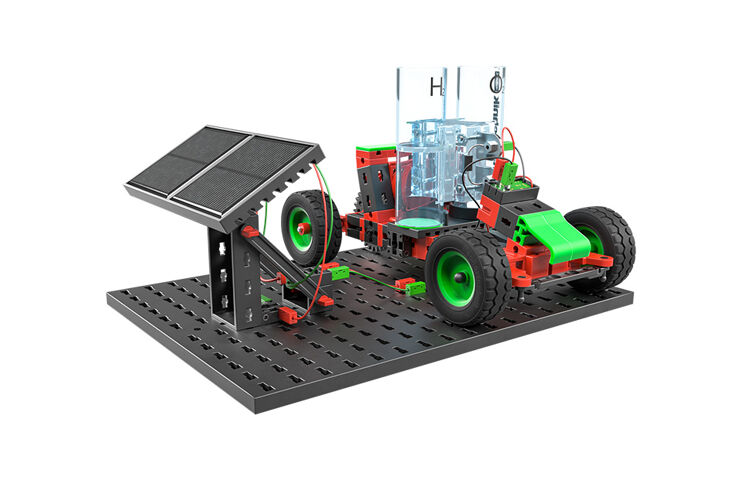
Regenerative or renewable energy refers to the provision of energy from sustainable sources such as sun, wind, water, geothermal energy or biomass. They are available in almost inexhaustible quantities. The sun still has a lifespan of around 5 billion years. Solar radiation can be converted into electricity or heat. Wind energy, hydropower and biomass are also solar energy in converted form.
In contrast, the reserves of fossil fuels such as coal, oil, natural gas and conventional nuclear fuels are continuously decreasing as consumption continues. These fossil fuels are non-renewable energies. Once they have been burnt in a power or heating plant, they are no longer available. They do not regenerate, they are devalued.
However, the growing world population and the advancing technological development of mankind are leading to an enormous demand for energy, which is constantly increasing. It is also known that emissions of the greenhouse gas carbon dioxide (CO2) from the combustion of oil, natural gas and coal are very high and, according to current knowledge, are the cause of global warming. However, the greenhouse gas emissions from renewable energies are only 1/10 to 1/100 per unit of energy generated compared to fossil energy sources.
The transition of the energy supply from fossil and nuclear fuels to renewable energies is already in full swing and is known in Germany as the energy transition. In addition to the increased expansion of renewable energies, reducing our energy consumption and increasing energy efficiency through technological progress are both key issues and current challenges. In everyday life, we encounter the energy transition in electromobility in transport, in the purchase of energy-efficient household appliances or in the energy-efficient refurbishment of buildings.
Current and quality-assured data on the development of renewable energies in Germany is regularly provided by the Federal Environment Agency.
We experience the manifestations of energy through the warmth of fire or the power of the wind. We cannot see, hear, taste or smell it and yet we utilise it in many different ways. We know this from physics: Energy is the ability to do work. When a lamp is switched on or a car is moved with petrol, we experience the conversion of one form of energy into another form of energy with the help of energy converters. Energy is therefore not a substance, but a property of bodies. Electric current is not energy either. It carries the energy with it and only releases it in the electrical appliances. Electric current transports energy.
From a strictly scientific point of view, the general use of the terms renewable or regenerative energy is therefore incorrect. Energy can neither be generated nor consumed, i.e. it cannot be renewed. Energy can only be converted from one form to another. Although the amount of energy in a closed system remains constant, the usable proportion of energy varies depending on the conversion. In total, the amount of energy remains the same. More precisely, what we call energy consumption is the devaluation of energy. The use value of energy decreases through conversion and transport. For example, when burning wood, the chemical energy stored in the wood is converted into thermal energy and light energy. When heat is released into the environment, it is no longer useful, it is devalued - we say "used up".
Because our energy consumption is constantly increasing while fossil fuels are shrinking, it is all the more exciting to experiment with renewable energies and to understand how solar energy, wind energy and hydropower can be used to convert and store energy and improve the efficiency of energy transmission.
Hydropower
Hydropower is certainly one of the oldest utilised energy sources. As early as 3500 years ago, the energy of water was utilised in Mesopotamia with the help of water wheels. It was a long way from the water wheel to the turbine. The engineering skills of the Age of Enlightenment led to improvements in water wheels and ultimately to the construction of new types of machines, such as water column machines. In 1824, Claude Burdin finally invented the first turbine on this basis. When Werner von Siemens invented the electrodynamic generator in 1866, it became possible to convert water power into electricity. In 1880, the first hydroelectric power station was put into operation in Northumberland, England. In 1890, the first German hydropower plant, which was also the first alternating current power plant, was connected to the grid in Bad Reichenhall and in 1896, the world's first large-scale power plant was built at Niagara Falls in the USA.
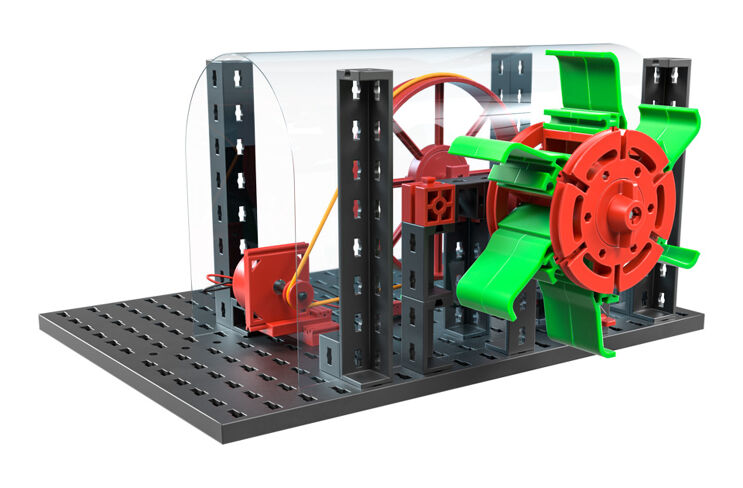
Wind power
With the advent of electricity at the end of the 19th century, the first attempts were made to generate electricity with wind turbines based on windmill technology. In the 1950s, engineer J. Juul became a pioneer when he built the world's first wind turbine to generate alternating current in Vester Egesborg. The innovative Gedser wind turbine with an output of 200 kW was built in 1956-57 by J. Juul for the electricity company SEAS on the coast of Gedser in southern Denmark. In 1987, Germany's first wind farm was built on the Growian site near Marne.

Photovoltaics
The photovoltaic effect was discovered by Alexandre Edmond Becquerel in 1839, marking the beginning of the history of photovoltaics. However, it was over a hundred years before it was utilised in the energy supply.The first explanation of the photoelectric effect was provided by Albert Einstein in 1904. Prior to this, Edmond Becquerel had provided evidence of a connection between light and energy generation, but initially no benefit could be derived from this discovery. In 1954, physicists Chapin, Fuller and Pearson succeeded in building the world's first version of a silicon solar cell. This was the starting signal for the use of crystalline solar cells to convert sunlight into electrical energy. The first 108 photovoltaic cells were used on the mission of the US satellite Vanguard in 1958.
However, it would be another 20 years before terrestrial systems were installed. In 1976, the Australian government decided to equip the telecommunications network in the outback with solar cells to charge the batteries installed there. In the mid-1980s, the Swiss engineer Markus Real persuaded people to install small decentralised photovoltaic systems on the roofs of houses in order to demonstrate private implementation. Numerous large-scale solar projects were subsequently launched, such as the 1,000 Roofs Programme in Germany (1990) and the 70,000 Roofs Programme in Japan (1994). In 2010, the ten gigawatt mark was exceeded in Germany and by 2012 the figure had already reached 25 gigawatts. By the end of 2019, over 49 GW had been installed in Germany.
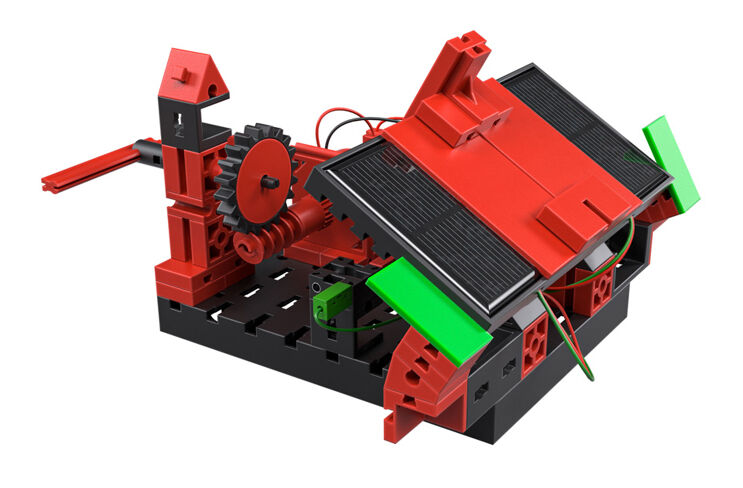
With the signing of the nuclear phase-out by the energy industry and the German government on 11 June 2001, the so-called energy transition, the conversion of the energy system to a sustainable energy supply with the help of renewable energies, moved to the forefront of social perception, current research and technological development.
The fischertechnik learning construction set Renewable Energies deals with the central issues of energy conversion through power converters, energy transmission and energy storage of renewable energy sources. The various models for wind power, hydropower and photovoltaics invite you to experiment and explore and address current issues in science and physics.
The following fischertechnik components are used for the work on renewable energies:
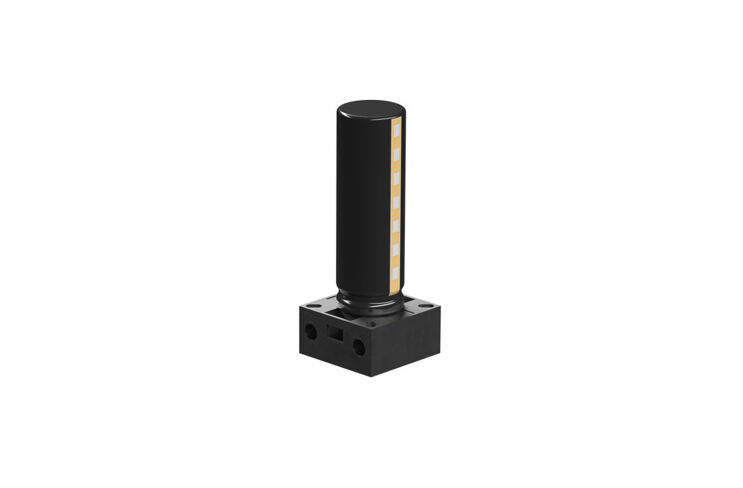
Of course, all of this fits perfectly into the fischertechnik system, so that not only the basic problems of renewable energies are represented, but realistic functional models can also be operated.
